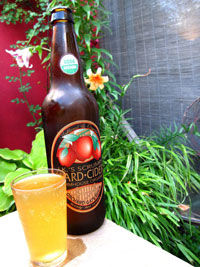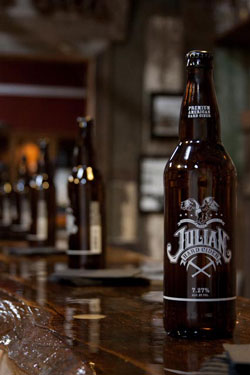
By Jason Cole
As summer approaches, warmer weather invites us to drink a refreshing beverage to match the bright sunny days and the vibrant blooms. A beer? Of course! Sparkling wine? That too.
Let’s not forget cider though. Hard cider, as we call it in America, has a long history in our country. However, much like beer, cider has been plagued with mass-market brands promoting bland, sweetened ciders made from concentrate and artificial flavors. These beverages fail to show the fascinating world that is cider.
Fermenting pressed apples has been a tradition in many countries, with each having their own regional characteristics. England, France and Spain have various cider cultures. The United States has always had a strong cider tradition. In fact, cider production was so common in colonial times that it was sometimes used for currency!
Apples used in cider can range from apples one would find at the grocery store or a farmers’ market to varieties that are actually inedible. Spitters are apples that are too tart for eating. Cider makers learn the characteristics of each apple and will often blend different varieties of apples to produce a desired product, much like a winemaker would use grapes. After all, cider is really apple wine. Ciders can be filtered or unfiltered, amber or almost clear, sweet or dry. From here in North Carolina to Spain, cider can offer a wide range of flavors and characteristics.

One cider to find this month is JK Scrumpy’s Farmhouse Cider. Scrumpy’s is an organic cider from Alma Orchards in Flushing, Mich. Styled after the English farmhouse ciders, it is an unfiltered, honey-colored cider with a fresh-baked apple aroma. Scrumpy’s tastes like earthy apple juice, at 6 percent ABV. It is wonderfully carbonated and finishes with a refreshing sweetness. JK Scrumpy’s is estate-produced, uses no additives or sweeteners and is preservative free. In addition, the cider is carbonated naturally and has yeast at the bottom of the bottle.

An American cider at the opposite end of the spectrum is Julian Cider from California. Julian pours almost as clear as water, filtered with only a vague golden hue. The cider is crisp and dry with an effervescent nose and very clean finish. Julian uses no additional sweeteners like honey or molasses. The clear color results from keeping the apples from oxygen. Oxidation is what turns apples brown after they have been cut. With limited exposure to outside air, Julian’s apples retain their clean fresh appearance. Ken Knott, director of operations at Julian Cider, says, “We use unbruised perfect apples that have been screened for blemishes. The apple we use would be the same you would find in the grocery store.†This cider makes a good substitute for an Italian prosecco or vinho verde to share with friends.
Crossing the Atlantic, one will find a thriving cider culture in the Basque region in Spain. Basque ciders are extremely carbonated, very much like champagne. Basque ciders are poured from a high position to allow the cider to explode in the glass. The carbonation is released and the result is a beautiful cider with a billowing foamy head. Traditional yeasts create a sour tang to complement the sweet apple flavor. They are highly acidic and pair wonderfully with rich dishes. One to look out for is Bereziartua from Casa Bere-Aran. It is not as carbonated as some Basque ciders, but provides a wonderful introduction to this old-world regional cider.
Cider seems to be drawing on the recent boom in craft beer. As specialty beer stores are becoming a place where craft and artisanal beers can be bought, craft ciders are finding shelf space and a market. The next time you’re in your local store, take a chance on a cider – you may be surprised what you find.
The following recipe not only uses cider but would pair well with cider for the complete cider experience.
Cider-Braised Weisswurst with Onions and Apples
Serves 4-6
Ingredients
1 cup cider
4-6 weisswurst or chicken sausage links
½ large yellow onion, sliced
1 green apple, peeled and sliced
¼ cup chopped parsley
2 tablespoons butter
Method
Melt butter in a deep frying pan over medium heat. Add sliced apples and onion with a pinch of salt. Slowly cook for 3-5 minutes. Add sausages and cover. Cook for 5 minutes, then add cider. Cook uncovered until sausages are plump and onions and apples are soft. Sprinkle with parsley and serve with mustard potato salad and a cider to drink.